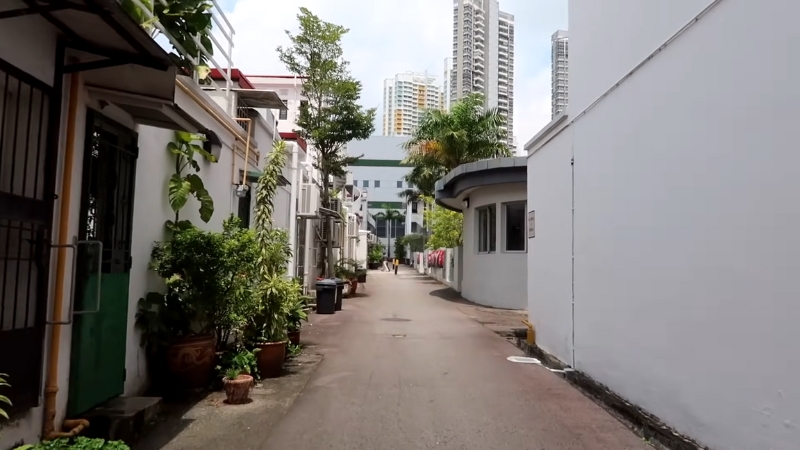Tiong Bahru has that quiet way of pulling you in. You wander past low-rise blocks with whitewashed curves, spot a spiral staircase, catch a porthole window out of the corner of your eye, and suddenly you’re hooked.
Breakfast legends stir upstairs in the market, murals peek out along breezy back lanes, and hidden courtyards beg you to pause a little longer.
It’s heritage with personality, layered with modern touches that make it one of Singapore’s most rewarding neighborhoods to explore.
We prepared a deep, practical guide for anyone who wants more than just a quick photo stop. It’s about what to eat, where to wander, and the small stories tucked into corners that give Tiong Bahru its lived-in charm.
Quick Snapshot
Singapore’s first public housing estate, conserved for its Streamline Moderne architecture and human scale. Today, it’s a blend of hawker heritage, indie shops, cafes, and murals.
Where It Is
Just west of Singapore’s CBD, bounded by Tiong Bahru Road, Seng Poh Road, and Outram Road.
How to Get There
- MRT: Tiong Bahru Station (East-West Line) drops you in the heart of things. Havelock Station (Thomson-East Coast Line) covers the northern edge.
- Bus: Services run along Tiong Bahru Road and Outram Road.
Best Time to Go
- Early morning for soft light and the freshest market breakfasts.
- Golden hour is late afternoon for photos, followed by dinner at the hawker centre.
A Short Origin Story That Matters
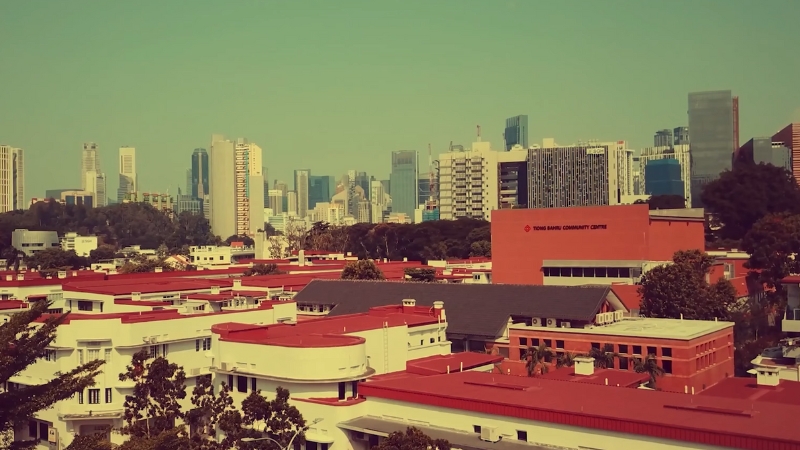
Tiong Bahru was born in the 1930s as Singapore’s first experiment with planned public housing, built by the colonial-era Singapore Improvement Trust. The blocks borrowed from Streamline Moderne, with their clean curves, long horizontal bands, and rounded balconies.
The style was futuristic back then and still feels oddly timeless in photos today. In 2003, the Urban Redevelopment Authority protected 56 of those pre-war buildings under conservation laws.
That decision keeps the estate’s scale intact: no high-rise towers, just human-friendly corners, balconies, and five-foot ways that invite lingering.
Getting Oriented
Think of Tiong Bahru in three main layers:
- Seng Poh Road and Tiong Bahru Market – The anchor for breakfast, lunch, and everyday people-watching.
- Eng Hoon, Eng Watt, and Yong Siak Streets – Where you’ll find murals, boutiques, and photogenic pre-war blocks.
- Moh Guan Terrace and Guan Chuan Street – Home to the iconic horseshoe block and the historic air-raid shelter.
Tiong Bahru Market & Food Centre
View this post on Instagram
No visit makes sense without eating upstairs at Tiong Bahru Market & Food Centre.
- The original Seng Poh Road Market opened in 1951, centralising street hawkers who had been serving the new estate.
- Rebuilt in the 2000s, the complex now has 255 wet market stalls downstairs and 85 cooked-food stalls upstairs, with seating for more than 1,000 diners.
Where to Queue
Some stalls are almost always lined with regulars:
- Hong Heng Fried Sotong Prawn Mee – Famous Hokkien mee, wok-charred, rich with prawn stock. Michelin Bib Gourmand recognition keeps the queue steady.
- Tiong Bahru Hainanese Boneless Chicken Rice – Classic poached chicken with rice that’s light, clean, and consistently on point. Also Bib Gourmand.
- Traditional breakfast stalls – Look for chee cheong fun (Cantonese rice rolls) and steamed rice cakes, dishes that have anchored local breakfasts for decades.
| Stall / Section | Go for | Why it matters |
| Hong Heng Fried Sotong Prawn Mee | Hokkien mee | Michelin Bib Gourmand, rich prawn broth |
| Tiong Bahru Hainanese Boneless Chicken Rice | Chicken rice | Consistently clean flavours, long queues |
| Traditional chee cheong fun and steamed cakes | Rice rolls, steamed cakes | Classic, old-school breakfast fare |
Architecture and Street Life
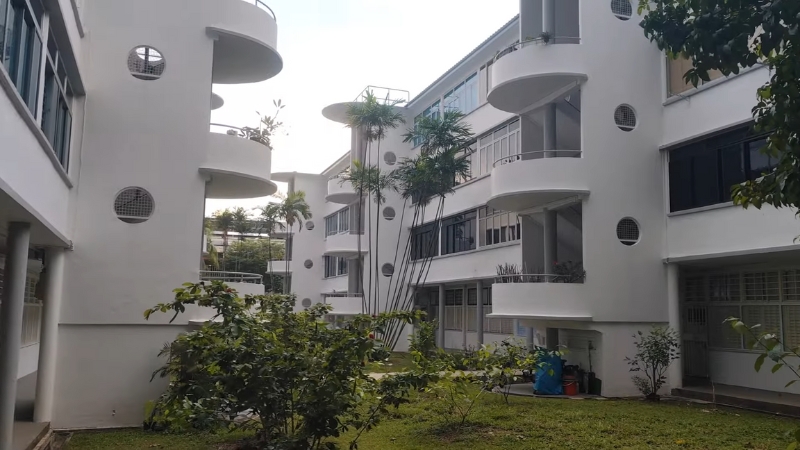
The pre-war SIT blocks are a playground for anyone into design. Streamline Moderne shows up in:
- Curved balconies with brick banding
- Slim vertical fins
- Circular stair towers with porthole windows
- Five-foot corridors lined with plants and bicycles
The crown jewel is the horseshoe block at Moh Guan Terrace, where sweeping balconies encircle a central courtyard. For history buffs, the URA occasionally runs heritage trails that explain the estate’s design in detail.
Murals Worth Hunting
Local artist Yip Yew Chong painted three murals around the estate, each steeped in memory:
- Pasar and the Fortune Teller
- Bird Singing Corner
- Home
How to See Them Best
- Arrive before 9 am on weekends or go mid-afternoon on weekdays to dodge crowds.
- Frame the murals with surrounding buildings so they read as part of the estate’s rhythm.
- Experiment with slow shutter shots if people walk into your frame; the blur adds nostalgic charm.
The Air-Raid Shelter
View this post on Instagram
At Block 78 Moh Guan Terrace lies Singapore’s first civilian air-raid shelter built into public housing, dating back to 1939. It isn’t freely open, but guided tours occasionally grant access.
Heritage groups like My Community sometimes include it in their programs. Roots.sg offers good background material if you want context before booking.
Bird Singing Corner
At Seng Poh Road and Tiong Bahru Road, you’ll find the revived Bird Singing Corner. In the 1980s, it was a weekend ritual for songbird owners to gather, sip kopi, and compare melodies.
The hooks for cages still hang, and even if fewer enthusiasts gather today, the story remains part of Tiong Bahru’s DNA.
Boutiques, Books, and More
Tiong Bahru shines when you browse without a fixed agenda.
- Yong Siak Street cluster: fashion boutiques, indie bookstores, and lifestyle shops showcasing local designers.
- Record and vintage finds: small shops with vinyl records and curious vintage pieces.
Shops change often, so check social media if there’s a particular store you don’t want to miss.
Temples and Quiet Corners
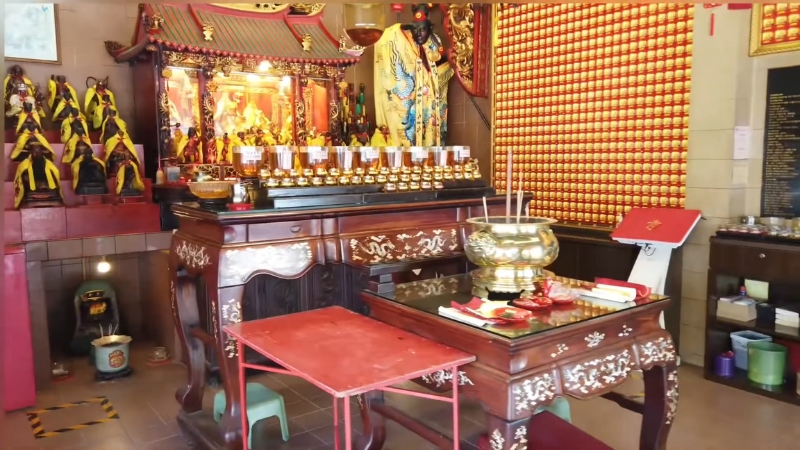
Qi Tian Gong Temple on Eng Hoon Street dates to 1920 and is one of Singapore’s first Monkey God temples. Step in respectfully, notice the multiple Sun Wukong statues, and take in the incense-filled air.
For green pockets, pause at Seng Poh Garden or head to Tiong Bahru Park, which has a whimsical tilting train playground that kids love.
Coffee, Pastries, and Cafe Culture
Much of Tiong Bahru’s modern reputation rests on its cafes. Sidewalk tables, flat whites, and flaky croissants have become weekend staples here.
A Half-Day Route You Can Actually Follow
Here’s a practical loop:
| Time | Plan |
| 8:00 | Arrive at Tiong Bahru MRT, walk to the market, grab coffee upstairs. |
| 8:30 | Queue for Hokkien mee or chicken rice, share plates to taste more. |
| 9:30 | Stroll for murals and architecture shots. |
| 10:30 | Visit Qi Tian Gong Temple. |
| 11:00 | Browse Yong Siak Street shops, or break for pastries. |
| 12:30 | Join a heritage tour if available, or walk toward Moh Guan Terrace. |
| 13:30 | Lunch round two – either back at the market or nearby eateries. |
Practical Tips
- Stay cool: Carry water, wear light clothing, and save longer walks for morning or late afternoon.
- Check hawker schedules: NEA’s online listings flag cleaning days.
- Respect residents: Stairwells and corridors are lived-in. Keep voices low and skip big tripods outside doorways.
- Carry small cash: Many stalls accept PayNow or cards, but small notes keep queues moving.
- Choose your day: Weekends buzz with people-watching; weekdays suit quieter browsing and photography.
For Architecture Fans
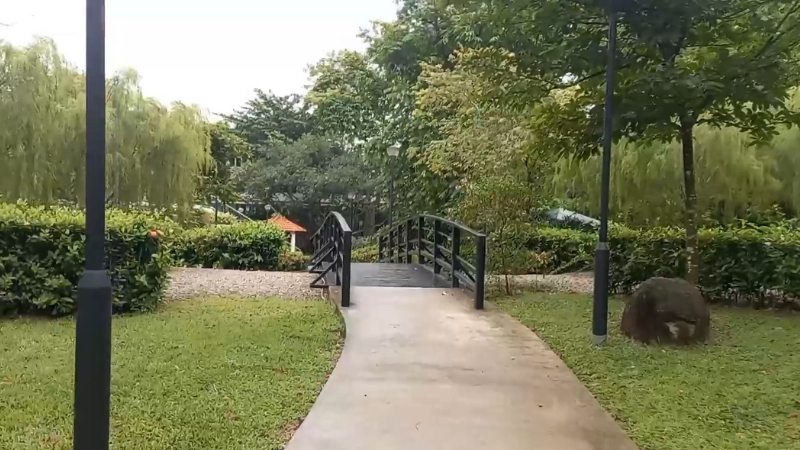
Tiong Bahru rewards anyone who lingers on the details. Pre-war flats were designed with corner towers that “gate” intersections, light courts that channel airflow, and the famous horseshoe block with its communal central space.
Once you notice the rhythm, you’ll see how every curve feels intentional.
If You Have Kids
- Tiong Bahru Park for playground runs.
- Market fruit stalls for a colourful snack.
- Murals as a simple scavenger hunt.
Break the walk with frequent cold-drink stops. The Singapore sun can be merciless.
If You Love Old Stories
- Air-raid shelter tours for a tangible link to pre-war Singapore.
- Bird Singing Corner for echoes of 1980s rituals.
- Temple processions from Qi Tian Gong, when Monkey God statues leave the temple and parade through the streets.
Why Tiong Bahru Works So Well
@certified_gmo Ok I don’t like the $7 coffee price but I do like the mix of a historic neighborhood that has both local and international options. Some days I want kopi O Kosong, some days I want a $5 Americano. Tiong Bahru is great for that. #tiongbahru #singapore #sgtiktok ♬ Storytelling – Adriel
It isn’t a polished tourist attraction. It’s a neighborhood that kept its human scale while layering new habits over old bones.
You can eat very well without breaking the bank, pick up pieces of Singapore’s housing history, and bring home photos that stand apart from skyline clichés.
The estate’s conservation matters too. Protecting 56 pre-war blocks wasn’t about nostalgia; it was about letting future generations walk through a city at eye level, where balconies, stairwells, and sightlines make you want to keep exploring.
Closing Thought
Tiong Bahru rewards slow attention. Whether you’re chasing heritage, hunting murals, sipping kopi, or flipping through vinyl in a side-street shop, the neighborhood gives you more than just another stop on an itinerary.
It feels like a story that’s still being written, one breakfast plate, one mural, one quiet courtyard at a time.

